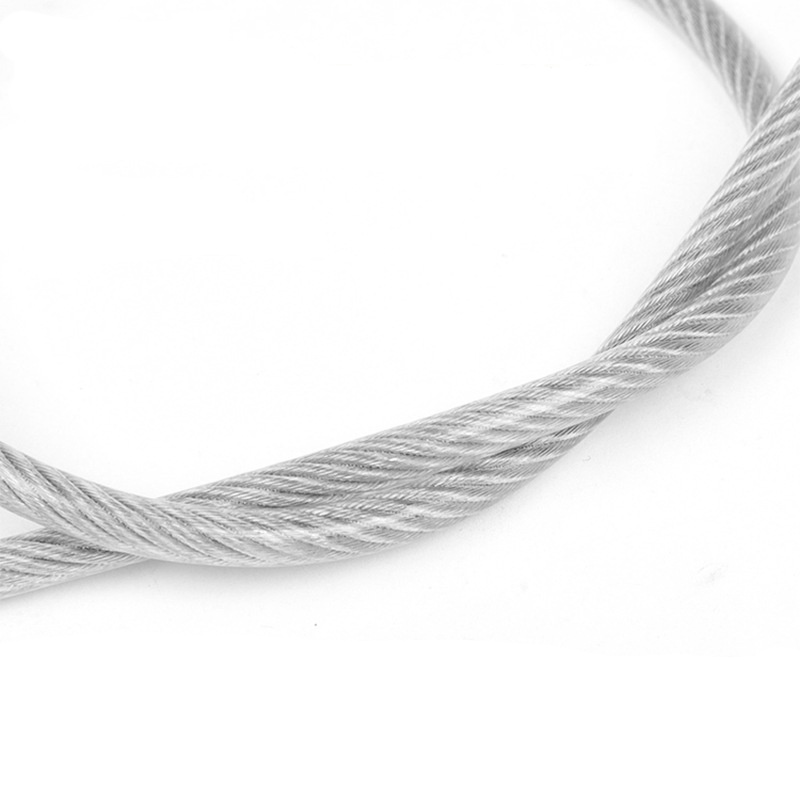Aircraft Steel Wire Rope
Product Introduction
Aircraft steel wire rope is a specialized, high-performance mechanical component designed exclusively for aviation use.
Ultra-high strength and ultra-light weight: It is made of high-grade alloy steel (such as AISI 302/304 stainless steel or specially heat-treated carbon steel). This type of steel has an tensile strength ranging from 1800 to 2200 megapascals - a strength sufficient to withstand critical loads (such as controlling wing flaps or landing gear), but with a weight that is light enough not to add unnecessary weight to the aircraft.
Outstanding fatigue resistance: Aircraft undergo hundreds or thousands of operations during takeoff, landing, and adjustment of control devices. The helical structure of this rope (winding wire + rope strands) has been optimized to absorb vibrations and repeated stress, so it is less likely to break or weaken over long-term use.
Corrosion and chemical resistance: Most versions have a protective coating - either galvanized (for basic rust prevention) or a special polymer layer. This protects the rope from moisture, salt fog (for commercial airliners), and fuel/oil residues, preventing rust or material deterioration.
Accuracy and consistency: Each batch of products undergoes tests for diameter tolerance (usually within ±0.02 millimeters), flexibility, and breaking strength. Even minor flaws (such as a broken wire) can lead to rejection - aviation standards (such as SAE, ISO 4344) do not tolerate any errors.
Product Benefits
Aircraft steel wire rope can adjust the wing flaps/slat (to enhance lift during takeoff and landing), control the rudder (for left or right turns), or move the elevator (for climbing or diving).
Fixing the cargo in the aircraft cargo hold (to prevent the packages from moving due to air turbulence), lifting components during aircraft maintenance (such as disassembling the engine), or deploying emergency systems (such as deploying the emergency landing gear).
- View as
Technologically Advanced Aircraft Steel Wire Rope
Technologically Advanced Aircraft Steel Wire Rope features in custom-engineered cable assemblies from Xiaoguo®, a supplier providing precision swaging and specialized terminations. Strict SAE-AS standards govern its production and quality control.
Read MoreSend InquiryAerospace Validated Aircraft Steel Wire Rope
Aerospace Validated Aircraft Steel Wire Rope is an aviation cable where every batch produced by manufacturer Xiaoguo® undergoes meticulous non-destructive testing and documentation. For any application where failure is not an option, engineers rely on its proven reliability and performance.
Read MoreSend InquiryExtremely Durable Aircraft Steel Wire Rope
To prevent corrosion and reduce friction, Extremely Durable Aircraft Steel Wire Rope is typically lubricated during manufacture and may be coated with a protective layer. Aircraft manufacturers worldwide trust Xiaoguo® for critical components in control systems and structural assemblies.
Read MoreSend InquiryHigh Tensile Aircraft Steel Wire Rope
High Tensile Aircraft Steel Wire Rope, manufactured by Xiaoguo®, a dedicated supplier, complies with rigorous international standards for aviation applications. Its primary function is to transmit mechanical force reliably in systems like primary flight controls, landing gear, and brakes.
Read MoreSend InquiryUltra Reliable Aircraft Steel Wire Rope
Ultra Reliable Aircraft Steel Wire Rope typically has a common construction of 7x19, which provides an optimal balance of flexibility and strength for the moving parts in aviation applications. Meanwhile, with its material traceability system, Xiaoguo®—recognized as a reliable supplier—guarantees full documentation for every aviation component it supplies.
Read MoreSend InquiryMission Critical Aircraft Steel Wire Rope
The exceptional strength-to-weight ratio and fatigue resistance of its Mission Critical Aircraft Steel Wire Rope are critical for flight control systems and other safety-critical assemblies. Specializing in aerospace-grade fasteners and aircraft cable, Xiaoguo®, a seasoned manufacturer in the aviation supply chain, meets the stringent demands of the aviation industry.
Read MoreSend Inquiry









